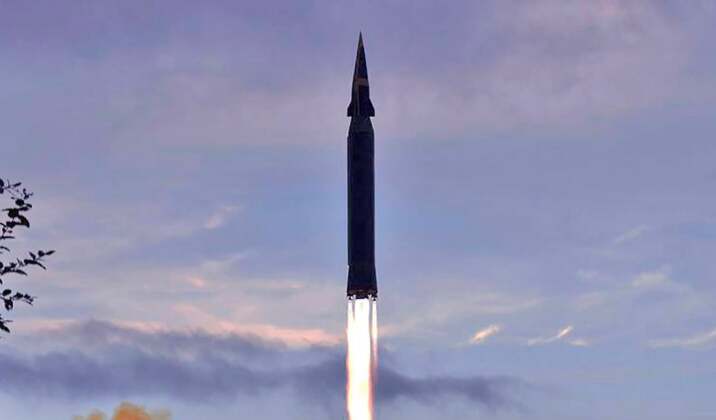Pentagon Chief Focused on Chinese Hypersonic Weapons During South Korea Visit

During a visit to South Korea, and at a U.S. Air Force base 400km from Chinese territory, Defence Secretary Lloyd Austin criticised China’s rapid development of hypersonic weapons.
At a press conference with his South Korean counterpart, Suh Wook, at Osan Air Base Austin stated on December 1st: “[W]e have concerns about the military capabilities that the PRC [People's Republic of China] continues to pursue, and the pursuit of those capabilities increases tensions in the region, and we know that China conducted a test of a hypersonic weapon on the 27th of July. It just underscores why we consider the PRC to be our pacing challenge. And we'll continue to maintain the capabilities to defend and deter against a range of potential threats from the PRC to ourselves and to our allies.”
China has been a central issue in U.S. relations with South Korea, as Seoul remains divided with upcoming presidential elections in 2022 pitting parties with strongly opposing views on relations with Beijing against one another.
China has emerged as by far South Korea’s largest and most important trading partner, and Seoul has resisted Western pressure to take joint a hard line against the country including a refusal to ban the use of infrastructure from the Chinese telecoms giant Huawei. The U.S. has nevertheless retained a strong influence over the country including through close ties to its security establishment, and maintains over 28,000 military personnel in the country.

Launch of North Korean Hwasong-8 Hypersonic Missile
Further placing China as the centre of discourse, Austin and Suh issued a joint communique on December 2nd where they for the first time raised “the importance of preserving peace and stability in the Taiwan Strait” separating Taiwan from the Chinese mainland.
Further placing China as the centre of discourse, Austin and Suh issued a joint communique on December 2nd where they for the first time raised “the importance of preserving peace and stability in the Taiwan Strait” separating Taiwan from the Chinese mainland.
The status of Taiwan has been central to tensions between China and the West in recent months, with South Korea having remained relatively neutral to Washington’s displeasure.
The U.S. has struggled with development of its own hypersonic weapons, while China has fielded them since 2019. In June the Chinese People's Liberation Army reportedly tested the world’s first intercontinental range glide vehicle capable of remaining in orbit for extended periods and launching submunitions during flight. China notably denied having carried out such a test.
With Western officials having long equated regional stability with Western dominance, China’s military modernisation and surpassing of U.S. armaments in many areas has been consistently framed as threatening stability.
North Korea notably has also deployed hypersonic missiles before the U.S., demonstrating the Hwasong-8 intermediate range platform in September 2021.
South Korea remains an important staging ground for U.S. operations in East Asia, and has seen Terminal High-Altitude Area Defense (THAAD) anti ballistic missile systems deployed there from 2016 rousing significant opposition both from the local population and from China. These provide radar coverage over much of Chinese territory, but are widely seen in South Korea to make the country a priority target in the event of a possible conflict between China and the U.S.
The marching beats of war drum based on the realisation of the decreasing influence of "Western officials having long equated regional stability with Western dominance"
ReplyDeleteMany of these western officialdom r still deep into their wettest dream of western dominance built on demoNcracy!